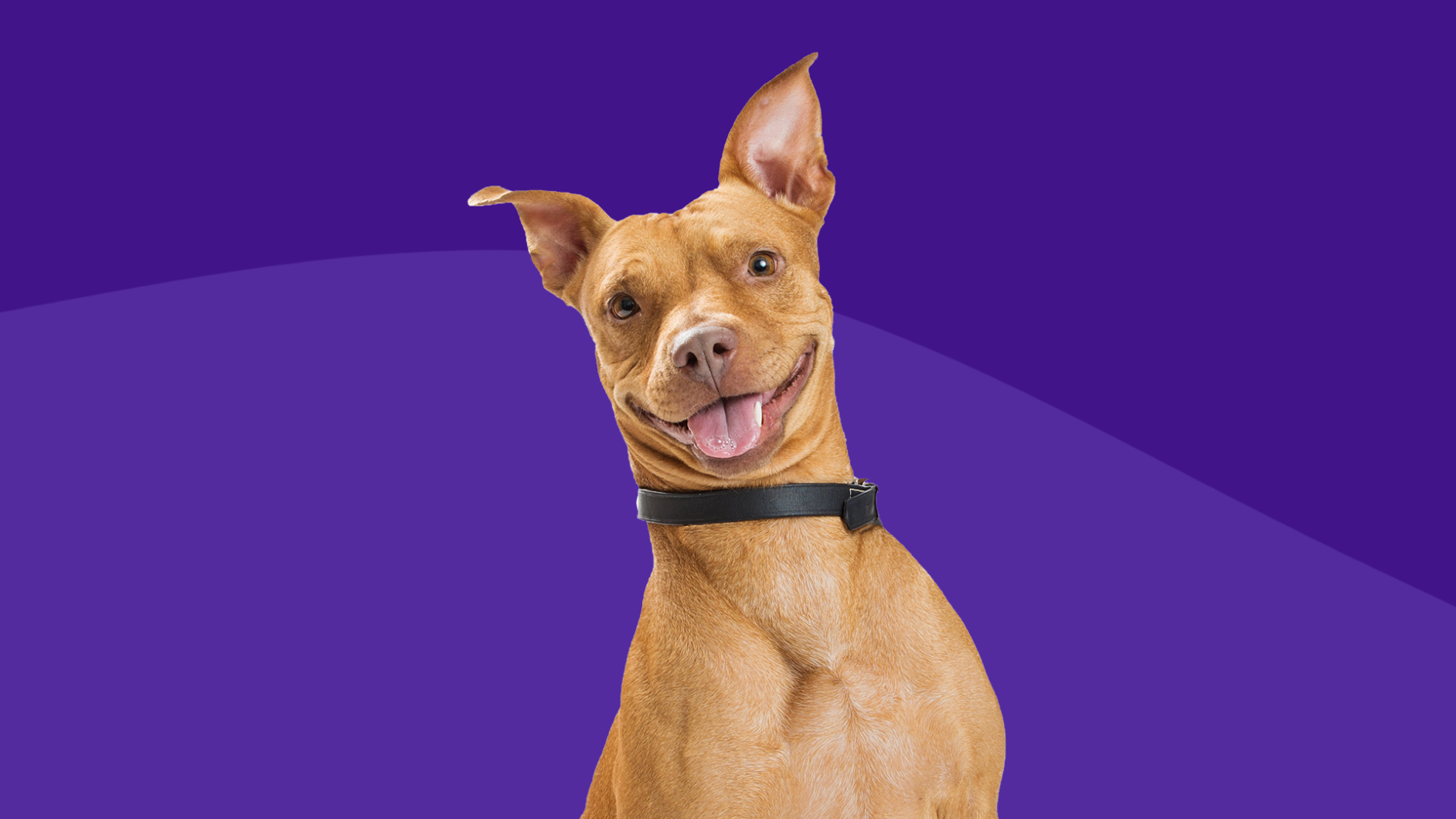There is a lot of stress in America—and your pets are not immune. That’s right, your pup can have anxiety. In severe cases, it might require treatment with veterinary medicine, like Prozac for dogs. Over the past few decades, there’s been an increase in anxiety diagnoses in dogs, according to Dr. Amy Pike, a veterinary behaviorist in Northern Virginia and self-proclaimed “psychiatrist of the dog world.”
In the U.S., 45 million homes have at least one dog. That’s the highest dog ownership number reported since the American Veterinary Medical Association first began measuring in 1982. There haven’t been any good studies on the prevalence of canine anxiety as a whole, but Dr. Pike says noise aversion studies show that 60%–70% of dogs have a noise phobia. That could encompass behaviors such as fear of garbage trucks and panic during thunderstorms.
To help their pets, some owners are turning to antidepressant medicines such as Prozac (fluoxetine). A 2017 national market survey suggests that nearly 10% of dog owners give their pets anti-anxiety medication.
What is dog Prozac (fluoxetine)?
When veterinarians prescribe Prozac (fluoxetine as generic) for dogs, it’s the same medication you would receive from your doctor for a similar issue—just in a different dosage. It’s a selective serotonin reuptake inhibitor (SSRI), meaning it blocks your body from reabsorbing serotonin. When levels of this neurotransmitter are higher in the brain, it’s thought to improve mood. Does your dog need anti-anxiety medication?
What is Prozac prescribed for?
The most common reason veterinarians prescribe Prozac is for anxiety disorders. But it can also help with a variety of other behavioral issues including aggression, compulsive disorders, phobias/fear, and more.
- Anxieties: Unspecified anxiety, situational anxiety, separation anxiety, adjusting to a new home
- Aggression: Unspecified aggression, general aggression, fear aggression, territorial aggression, aggression toward people or dogs, dominance aggression
- Compulsive Disorders: Obsessive-compulsive disorder (OCD)
- Phobias/fear: Fear of noise, thunderstorms, and others
- Other behaviors: Chronic licking, and others
Is Prozac right for your dog?
Before prescribing anti-anxiety meds, your vet needs to rule out a medical cause. Dog anxiety can be triggered by internal issues such as irritability caused by allergies or even pain caused by osteoarthritis.
Once an underlying condition is ruled out, a veterinary behaviorist will assess your dog’s social and environmental history and anxiety episodes. “It’s not really always about figuring out the ‘why,’ but how to move forward,” Dr. Pike says. A diagnosis—such as fear-based aggression with people and dogs—will be followed by a prognosis. A treatment plan including medications and behavioral modification will also be made.
For dogs with mild anxiety, Dr. Pike recommends natural calming pheromones and supplements. These include the Adaptil pheromone spray or collar and Anxitane S which is an L- theanine supplement that comes in a chewable treat.
For dogs with more intense anxiety, she recommends Prozac (generic fluoxetine). Lexapro or Zoloft are other name brand psychotropic medications that are commonly used. There is also an FDA-approved veterinary brand of fluoxetine specifically made for dogs called Reconcile. Dr Pike likes this version because it comes in a flavored chew tab that most dogs will take as a treat.
(And, yes, you can use the SingleCare card on any brand name or generic drugs that your vet prescribes that would also be prescribed to humans—i.e., Prozac, Lexapro—for savings up to 80%).
How long does it take Prozac to work in dogs?
At the four-week mark, the medicine will “kick in [and] will begin making the changes we need in the brain,” Dr. Pike says–by then, it will have taken full effect. About 30% of dogs will need to be switched to a different medicine, such as Lexapro or Zoloft, if Prozac doesn’t work.
Prozac dosage for dogs
Your vet will determine the correct dosage of Prozac for your dog for best results. It typically comes in 10 mg or 20 mg tablets, and is dosed at between 0.5 – 0.9 mg per pound each day. That means a ten pound dog might receive a dosage of 5 to 9 mg. Always follow the exact dosage instructions provided by your vet.
If you miss a dose, a good rule of thumb is to give your dog the medication when you remember, but not if it’s closer to the time that their next dose is due. You should never give your dog two doses together. Your veterinarian can provide you specific guidance on what to do if you feel uncertain.
What are the side effects of fluoxetine for dogs?
While Prozac may help improve behavioral problems and help your dog have less anxiety, if too many unpleasant side effects are present, it may not be a good match for your pet. Any side effects are usually gastrointestinal—vomiting, diarrhea, and lack of appetite—which Dr. Pike says last only a day or two in dogs with a positive response to psychopharmaceuticals.
Sometimes, your dog may experience increased aggression, but it shouldn’t cause behavior changes. The following are other potential side effects:
- Sleepiness
- Shaking
- Restlessness
- Panting
- Whining
- Incoordination
- Excess salivation
- Weight loss
Watch out for severe side effects that could signify an overdose including agitation, aggression, loss of appetite/refusal to eat, decreased heart rate, difficulty breathing, vomiting, diarrhea, difficulty walking, hypersalivation, and seizures.
Serotonin syndrome, caused by an overdose, is also a possibility, with symptoms including an elevated heart rate, muscle tremors, rigid muscles, restless behavior (panting and pacing), agitation, disorientation, confusion, and seizures.
If your dog is under 6 months old, has a history of seizures, is allergic to Prozac, or taking MAO inhibitors, Prozac should be avoided. Caution should be used in dogs with diabetes mellitus, liver disease, kidney disease, or dogs who are pregnant or lactating.
Be sure your vet knows about any supplements or medications your dog is currently taking. Potential drug interactions include:
- Anticoagulants
- Aspirin
- Buspirone
- Cyproheptadine
- Diazepam
- Alprazolam
- Diuretics
- Flea/tick collars
- Insulin
- Isoniazid
- Monoamine oxidase inhibitors (MAOIs)
- Methadone
- NSAIDs
- Pentazocine
- Phenytoin
- Propranolol
- Metoprolol
- St. John’s wort
- Tramadol
- Tricyclic antidepressants
- Trazodone
What should you do beyond medication? Alternatives to Prozac
Prozac isn’t your only option when dealing with challenging behaviors in your dog. Here are some options to consider.
Try behavior modification
Medication is not “a magic wand that will cure an underlying disorder,” Dr. Pike warns. In order to change the underlying emotion that’s driving the dog’s behavior, therapy is key. “Without the behavior modification,” Dr. Pike says, “it’s very unlikely that the dog will ever come off the meds.”
And the research bears that out. Daniel Mills, professor of veterinary behavioral medicine at the University of Lincoln, UK, wrote in a 2015 study of Prozac and pets that drugs and a behavior modification program were “essential for effective treatment.”
Use a trainer along with medication
Dr. Pike, who is one of fewer than 70 board-certified veterinary behaviorists in North America, uses medications to “facilitate the change.” The medicine decreases the intensity of the fear and the arousals that drive the behavior; so, once the dog’s fear threshold is lowered, a trainer can teach the dog alternative coping skills in a stressful situation. Pike says much of the work she does is also about teaching the owners how to handle their dog’s behavior.
Consider the longevity of symptoms
The treatment timeline correlates with how long the dog has been suffering. Dr. Pike advises that “however many years the behavior has been going on equals the number of months the treatment is expected to take.”
If you’re ready to get your dog on a treatment plan, ask your vet to recommend a veterinary behaviorist. And above all, Dr. Pike warns, you should never “self-medicate” your dogs with your own anxiety prescriptions.











